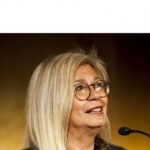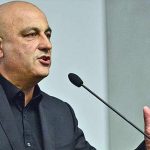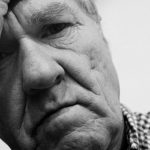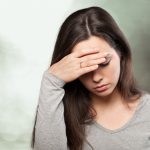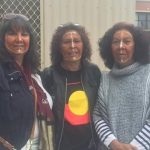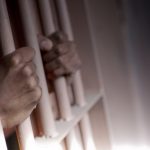First Nations Suicide Prevention: An Interview With R U OK?’s Dr Vanessa Lee
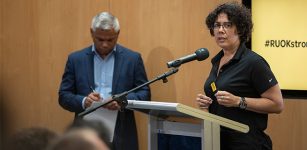
Aboriginal and Torres Strait Islander suicide rates have reached crisis point. After being very low in the late 1980s, the number of First Nations people taking their own lives over the last decade has been increasing dramatically.
And over the first three months of this year, at least 38 Aboriginal and Torres Strait Islander people have already taken their own lives. Two-thirds of these individuals were under the age of 26, while three of them were just 12 years old.
Indeed, during the nine days ending on 11 January, five young Aboriginal girls took their own lives, while a 12-year-old boy attempted to do the same just days later. And in the second week of last month, four Indigenous youths ended their lives in Queensland over a 40 hour period.
Following the spate of deaths in Queensland, First Nations leaders have been calling on the federal government to respond to this crisis with a plan that’s informed by Indigenous people, rather than implementing the same failed approaches it’s attempted in the past.
Stark statistics
Aboriginal and Torres Strait Islander people are twice as likely to take their own lives than non-Indigenous people in this country. According to Australian Bureau of Statistics figures, 165 First Nations people ended their own lives in 2017.
This made intentional self-harm the fifth leading cause of death amongst First Nations communities that year, whereas looking at the overall population suicide came in as the thirteenth main cause of death.
In 2017, the suicide death rate amongst Aboriginal and Torres Strait Islander people was 25.5 deaths per 100,000 people, compared to 12.6 suicide deaths per 100,000 of the general populace. And for Indigenous people between 15 and 34 that year, self-harm was the leading cause of death.
While over the five year period ending in 2017, First Nations children and youths accounted for more than a quarter of all suicide deaths in that age group, whilst they only account for 5 percent of the overall youth population in Australia.
Stronger Together
In the face of these escalating numbers, R U OK? last week launched Stronger Together, which is a “targeted suicide prevention campaign to encourage conversation within Aboriginal and Torres Strait Islander communities”.
The campaign encourages individuals to strike up a chat with family and friends who may be struggling. And the campaign and its culturally appropriate resources were developed by an Aboriginal and Torres Strait Islander advisory group and 33 Creative, an Aboriginal-run agency.
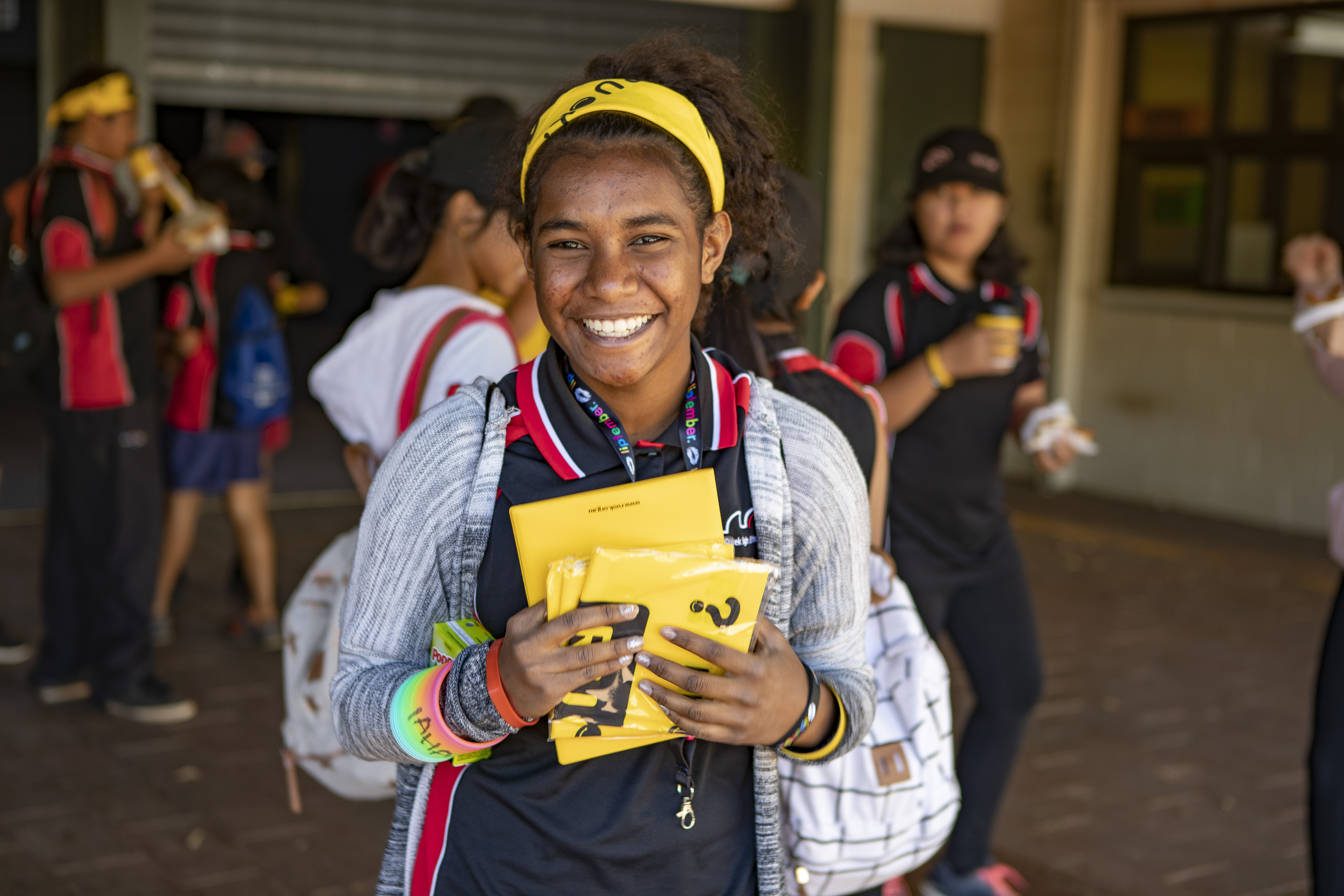
Suicide Prevention Australia director Dr Vanessa Lee is a senior researcher in social epidemiology. The Yupungathi and Meriam woman chaired the advisory group that provided guidance and oversight in the development of Stronger Together.
Sydney Criminal Lawyers spoke with Dr Lee about the importance of Indigenous suicide prevention strategies being guided by Aboriginal and Torres Strait Islander people, ways in which children that may be troubled can be approached, and why the Staying Together campaign marks a societal shift.
Firstly, Dr Lee, in your opinion, why is suicide on the rise amongst Aboriginal and Torres Strait Islander communities? What’s behind this stark increase?
A lot of people are living in despair. A lot of people are living in poverty. And what we’re seeing quite often is that Aboriginal and Torres Strait Islander young people – and it’s the same for non-Indigenous people – don’t know how to get out of these cycles.
Recent research by Adele Cox and her institute identified that Aboriginal and Torres Strait Islander people living below the poverty line have higher suicide rates than non-Indigenous people living below the poverty line.
And Aboriginal and Torres Strait Islander people above the poverty line have lower suicide rates than non-Indigenous people who live above the poverty line.
Now, they’re important statistics, which talk about how people connect and their connection holistically to what’s going on around them.
We’re at this point now where we understand what holistic health is. But, there are so many policies imposed on Indigenous people – their connection to country, connection to land, to go fishing, to go hunting – there’s so much imposed on Indigenous people to practice their own culture.
Now, we suddenly see Indigenous people above the poverty line, who realise that all this new age awareness of holistic health is part of their connection of who they are. And it begs the question, are they now accessing that on a different level?
A lot of these people that are taking their lives – these young people in particular – are coming from communities. I’m not saying that they live on the poverty line, but most people who come from communities statistically live on the poverty line or below.
So, we’re seeing that increase across those communities. The four young people who took their lives in Brisbane recently, I don’t know their demographic location. But, what I can say is we’re finding that young people are also taking their lives because of cyberbullying, bullying in general, racism and discrimination.
They don’t have the strategies or the resilience to cope with what’s going on.
R U OK? just launched the Stronger Together campaign which is specifically aimed at Indigenous communities. What would you say its main message is?
The main message is “let’s talk, we’re stronger together”. And that’s what it’s about. It’s about yarning.
The audience is targeted at help givers. Those in our communities who can offer help to those who seem to be struggling with life.
The whole reasoning why we’re communicating this is to reduce Indigenous suicide, because it’s now an urgent priority. It’s one of the biggest challenges of our generation. And Indigenous suicide isn’t just an Indigenous issue, it’s an Australian issue.
The campaign was developed from the ground up, with culturally appropriate content. It has been community-led and community-driven.
Although, the campaign was funded by R U OK? It was developed by an Aboriginal organisation called 33 Creative, which used to be an organisation called Healthy Vibe back in Queensland a long time ago.
It’s Aboriginal-owned and Aboriginal-run. So, the whole Stronger Together campaign was developed by Aboriginal and Torres Strait Islander people for Aboriginal and Torres Strait Islander people, along with non-Indigenous people.
So, how important is it that suicide prevention campaigns for First Nations people are developed and coordinated by them?
We need to co-design. We need to co-design to make sure it works. In that co-design, we need non-Indigenous organisations – especially the government – to recognise Aboriginal and Torres Strait Islander mental health clinicians and counsellors.
We need suicide prevention programs run out of Aboriginal community-controlled health services, or with Aboriginal community-controlled health services. The importance of that is Aboriginal and Torres Strait Islander people know their own culture.
We come from 50,000 years of the oldest continuing culture in the world. And our culture is passed on orally and through dance. We have our own science. And all that knowledge is understood by Aboriginal and Torres Strait Islander people.
All the ways of knowing, doing and being are under Aboriginal and Torres Strait Islander people. If you don’t understand the culture, you can’t help the people. And we’ve seen that since colonisation.
And it’s no disrespect to non-Indigenous people. But, there comes a time when we actually have to call it a day and say, “Hey listen, you’re way of doing things doesn’t work for our people.
We actually need to take control of this ourselves. And you need to step back and support us in doing that. We’re happy to work with you in this co-design, but you’ve got to stop trying to control us, as it’s killing our young people.”
As you’re saying, Staying Together has been developed by Aboriginal and Torres Strait Islander people for Aboriginal and Torres Strait Islander people. So, what are some of the ways that it differs to programs that might be designed for non-Indigenous people or the wider community?
It’s built on engaging and yarning with Aboriginal and Torres Strait Islander people. So, it was developed by Aboriginal and Torres Strait Islander people with Aboriginal and Torres Strait Islander people in mind.
The campaign committee that came out of R U OK? was all Aboriginal and Torres Strait Islander. We were the advisory group into the actual campaign that was being developed by 33 Creative, which is an Aboriginal organisation.
The stories are authentic. And they are built on the sense of connection: connection to country, connection to culture, connection to family, hope, information, grounding, freedom and identity, as well as knowing that it’s OK to be an Aboriginal and Torres Strait Islander person.
At present, Aboriginal and Torres Strait Islander youths account for 5 percent of young people in this country, yet they make up more than 25 percent of young people who take their own lives.
How can we account for such a large number of Indigenous youths taking their own lives?
We need to start looking at the way the system actually caters for young people. And I’m not saying it’s all the systems fault. We also have transgenerational trauma in amongst it all.
So, we see an Aboriginal elder who’s experienced racism and bullying his or her whole life. And that person shares it with their grandchildren.
That grandchild is also going to school experiencing racism from a teacher, who has not experienced any training in cultural competency, has not had any experience with cultural diversity, is not culturally aware and is not culturally sensitive.
This young child – this 12-year-old – is hearing the stories from their grandparents and then coming to school, where they might apply the same strategy that their grandparents used back then. But, when they get to school these strategies may not be allowed, or the child is told that they’re stupid.
Quite often Aboriginal and Torres Strait Islander children are struggling with their identities at school, because they’re getting bullied and teased. And the racism and discrimination are actually compounding them into this space where they don’t know how to speak out. Their identity is being squashed.
As adults, it’s quite easy for us to turn around and say to a 12-year-old, “Are you being bullied at school?” But, nobody ever stands back and says, “Does that child understand the definition of bullying?”
So, it’s about taking the next step, going backwards and saying, “Listen, what happened at school today?” And the child tells you what happened.
And then you say, “Well, when somebody makes you feel that anxious and you don’t know what to do or where to turn, that can be a form of bullying.
And if you’re not getting any support from anyone and your voice isn’t being heard, we need to talk about that. We need to yarn about that.”
We as adults, take it for granted that young people know all these definitions, but quite often they don’t. They don’t know how to articulate what’s going on for them. And we have a responsibility to hear. Not just to listen, but to hear.
I used to sit down with my grandmother from a very young age. And my arm would be resting on her arm. I’d just sit next to her and we’d be feeling each other’s presence.
And my grandmother would say, “Vanessa, just talk to the wind and let the ancestors hear what you have to say. Let the ancestors decide what will happen.”
So, that process of letting go, just yarning and letting go continuously, is part of our connection of who we are. It helps you to come to terms with what’s going on around you. And understand what it is that people are labelling as bullying and discrimination.
Young people don’t know how to articulate it. And we do have a responsibility as adults.
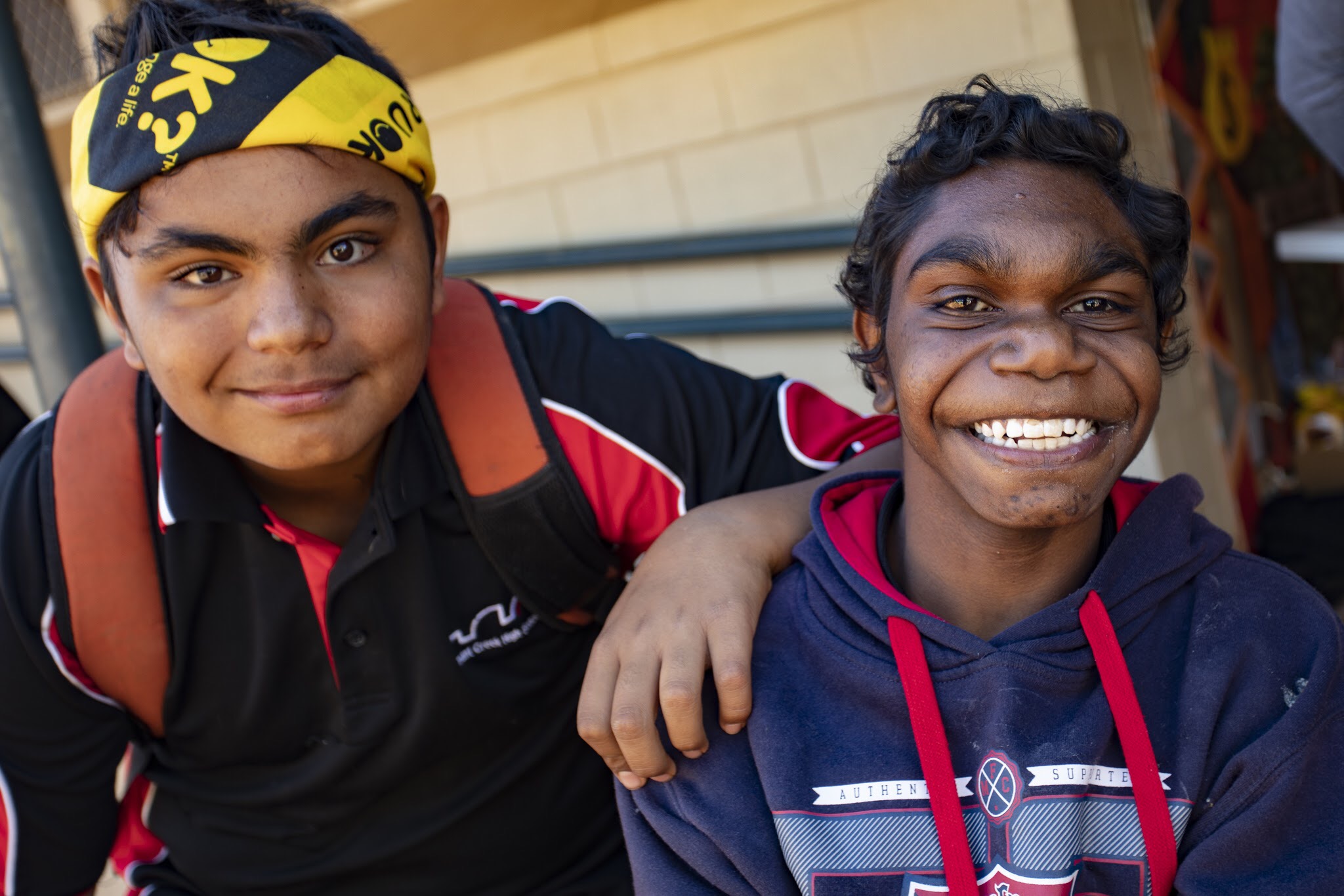
On Tuesday night, as part of the federal budget, the Morrison government allocated $15 million to Indigenous suicide. Is this the response leaders have been calling for? And how adequate would you say this funding is?
It’s the response that we have been calling for. But, it’s also a drop in the ocean. In reality, we also need a national Aboriginal and Torres Strait Islander suicide prevention strategy.
I’m currently working with a section of the government to develop a national suicide prevention strategy for all of Australia. As we’re now at a crisis point, we need to have a national Aboriginal and Torres Strait Islander suicide prevention strategy.
The danger of money going in like this is that quite often it goes to non-Indigenous organisations with no accountability. And it’s no disrespect to non-Indigenous organisations, but if the funding worked going to them, we would see a reduction in suicides. But, we’re not. We’re seeing an increase every year.
So, we need to stand back and say, “You know what? There needs to be a better system of accountability. We need to have an Aboriginal and Torres Strait Islander suicide prevention strategy that’s signed off by all the states and territories, as well as COAG.
And we need it to be developed with Aboriginal and Torres Strait Islander community-controlled health organisations, people and clinicians, as well as delivered together.
It needs to be co-designed, because we can’t stop non-Indigenous people getting the funding. We can’t stop non-Indigenous people wanting to help. And sometimes, that wanting to help is actually a danger in itself, because they’re not culturally competent.
They don’t understand Aboriginal and Torres Strait Islander culture. And they don’t understand the ways of our people and our connection to country.
Without that understanding, you actually struggle to address Aboriginal and Torres Strait Islander suicides, because young people aren’t able to articulate to a non-Indigenous person, quite often, what’s going on with them.
Whereas, if you have an Aboriginal and Torres Strait Islander person talking to another Aboriginal and Torres Strait Islander person – they understand the way we yarn, the way that we connect, our culture, how we’re influenced – then that yarning takes place and we can open it out and find out the depth of people.
The budget needs to have some really strong KPIs around it. It needs to be wrapped properly. It can’t be just dished out willy-nilly like we have seen in the past.
Like I say, we need tighter accountability. We need Aboriginal and Torres Strait Islander community-controlled health organisations at the table having these discussions.
We can’t just be palming it off to non-Indigenous people, because they made a difference with their own people, as we no those programs don’t work with Aboriginal and Torres Strait Islander people.
It’s about being real and being honest. And, you know, $50 million isn’t a lot of money. We live in a time when we see deficits in the billions.
Thank you very much, Mr Morrison. But, at the same time let’s be real. Let’s get some real policies in place and start changing the legislation, so that people become more accountable in the way that they deliver services to Aboriginal and Torres Strait Islander people.
And lastly, Dr Lee, the Stronger Together campaign, and indeed other suicide programs, are about preventing people from taking their own lives, which is usually due to other factors in their lives.
So, at a deeper level, what sort of societal changes do you see need to occur so that so many First Nations people aren’t reaching a place where this seems like an option?
The reality is the numbers are not just numbers, they represent lives. They represent people. They represent loved ones, relatives, friends, elders and extended community members. All these people and everyone around them are affected by the tragedy of death.
That societal change needs to take into account who we are as a people. We need to start seeing that respect and that understanding of the different cultures. We need to see Aboriginal and Torres Strait Islander cultures recognised properly.
Aboriginal and Torres Strait Islander culture is the oldest continuously living culture in the world. And we’re in Australia. It’s the reality. And we should all be proud of that fact.
We need to see that change in the constitution. We need to see Aboriginal and Torres Strait Islander people recognised in the constitution. The Uluru Statement wasn’t a joke. It was a reality.
We also need to start seeing change where organisations start discussing with Aboriginal and Torres Strait Islander controlled health services what needs to happen. Stop assuming that you know. Because quite often non-Indigenous health organisations don’t know.
The thing about working with R U OK? was they actually stood back. They accepted that they didn’t know our culture. They accepted that they didn’t have our knowledge. And they took a step back and they let us lead the campaign. We worked with Creative 33 to get this Stronger Together campaign implemented.
Right there, we saw a societal shift. Because you rarely see a non-Indigenous organisation step back. Quite often, non-Indigenous organisations have an Indigenous advisory group and they make them the token.
We weren’t the token in this. We were actually part of the leadership. And that’s what’s important, because our voices were heard and we saw the evidence of our voices being heard in this campaign.
That societal shift needs to happen across the board. We need non-Indigenous organisations to be held accountable, because, obviously, the way that they’re doing things is not working.


